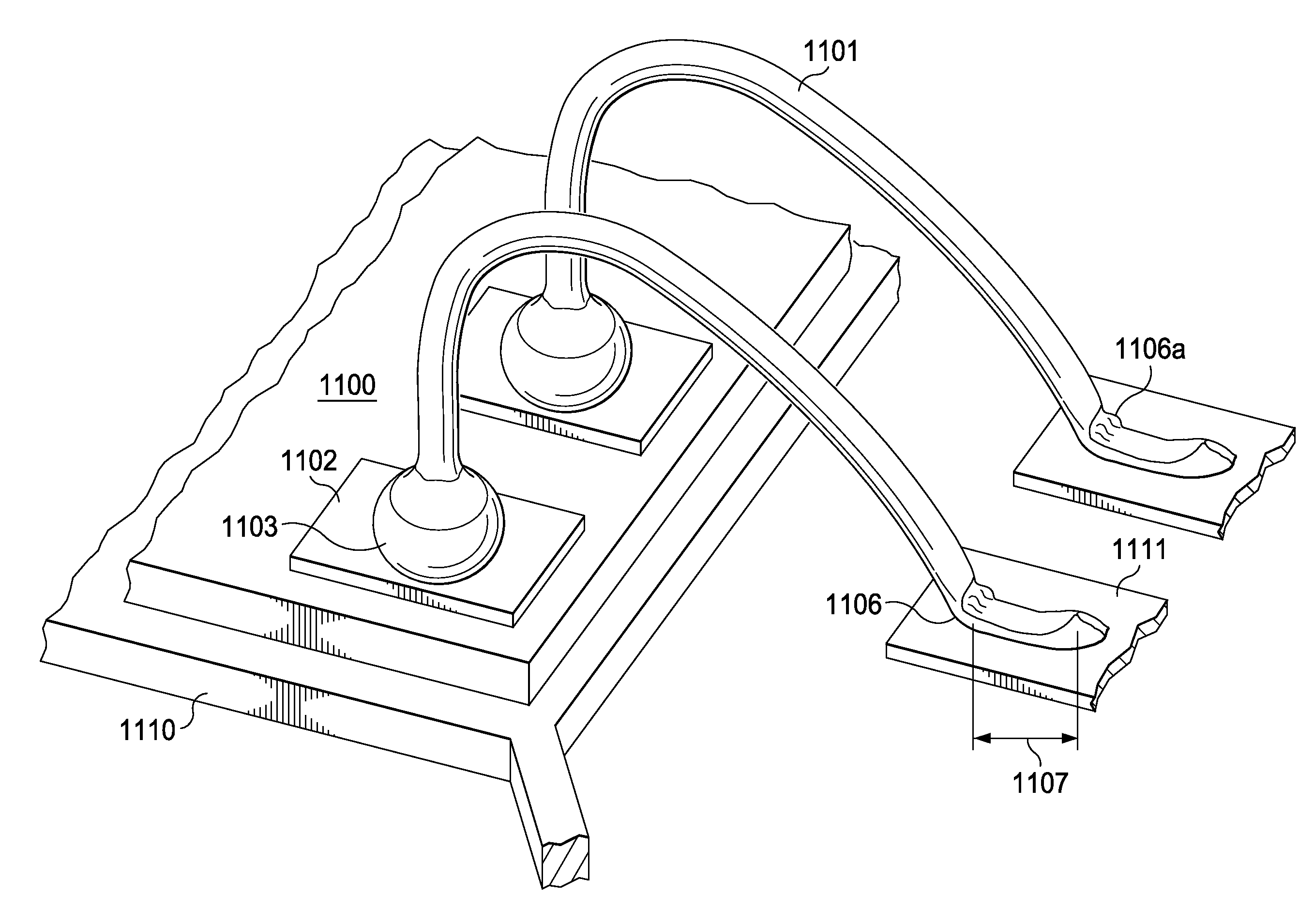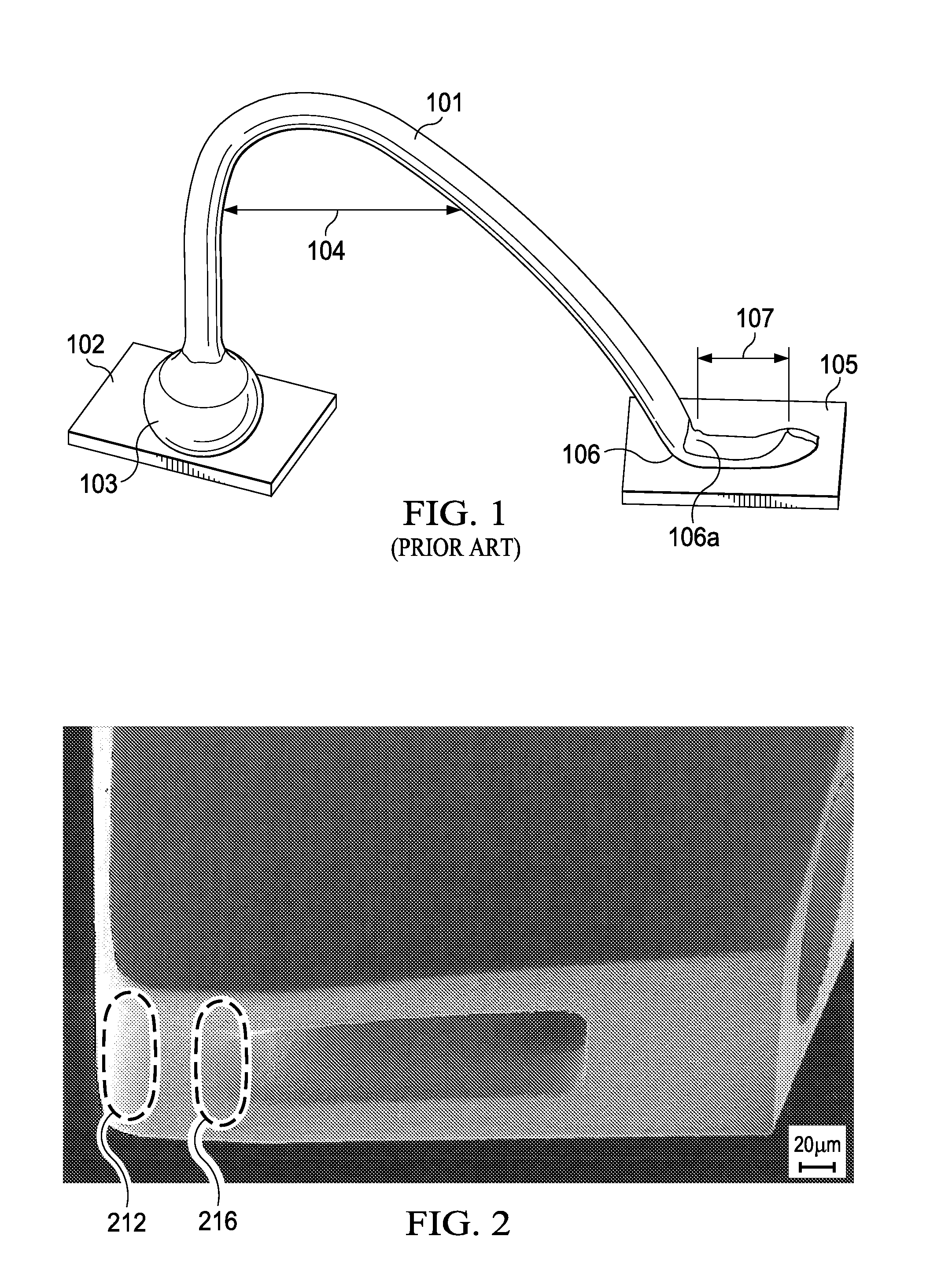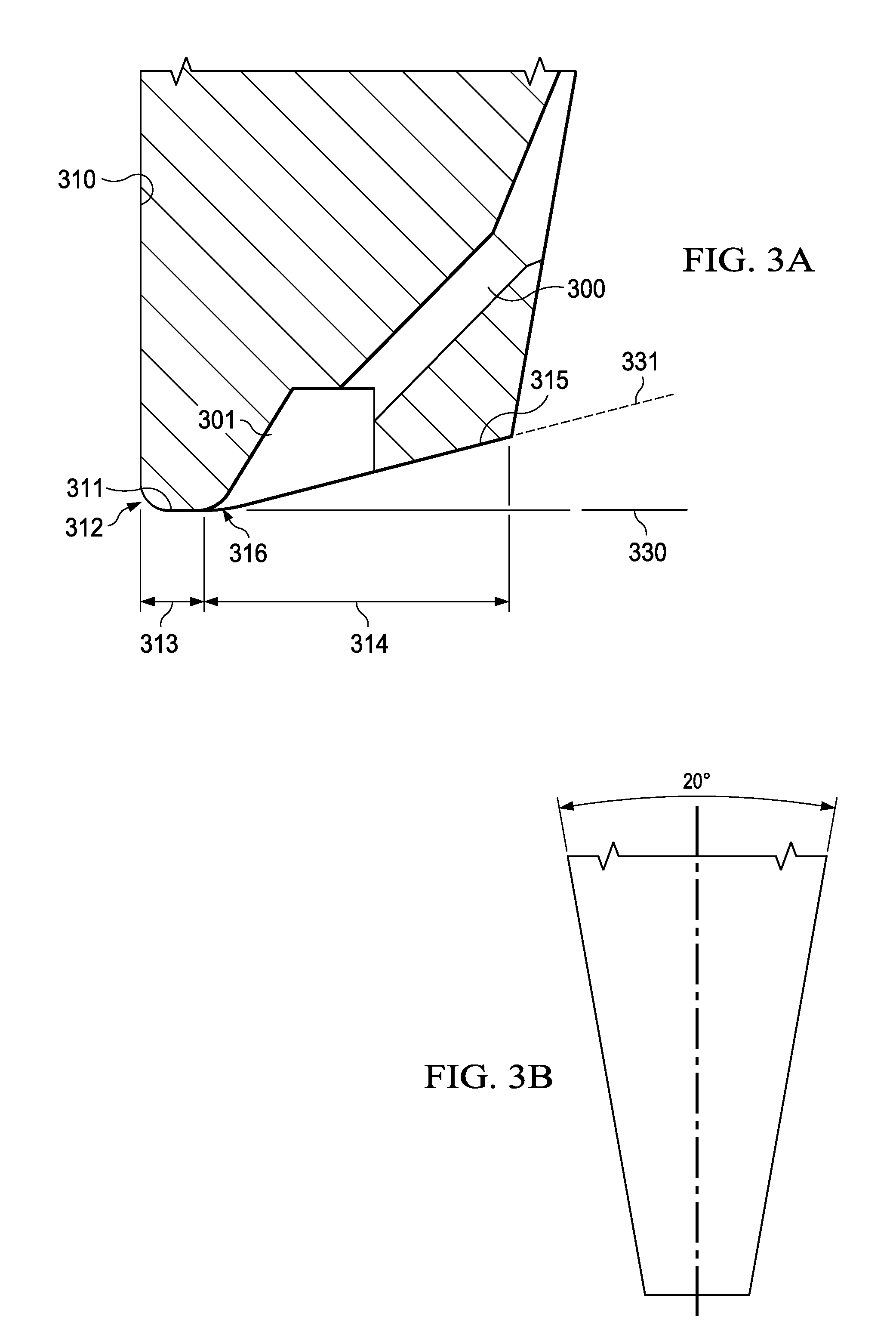Wire Stitch Bond Having Strengthened Heel
a technology of wire stitch and heel, which is applied in the direction of soldering apparatus, welding devices, manufacturing tools, etc., can solve the problems of cte mismatch exerting pulling force on the wire stitch, the heel breakage is eliminated, and the capillary maintenance is careful, the effect of optimizing machine parameters
- Summary
- Abstract
- Description
- Claims
- Application Information
AI Technical Summary
Benefits of technology
Problems solved by technology
Method used
Image
Examples
Embodiment Construction
[0031]FIG. 2 illustrates a scanning electron microscope photograph (magnification 600×) of the tip, or end, of an exemplary straight tube made of an inert material such as tungsten carbide, which is preferably used in automated bonders for fabricating electrical wire connections in semiconductor devices. The tube has a certain length and inside a cylindrical bore with a very small diameter. The tube is, as a capillary tube, commonly referred to as the capillaries, or short the capillary, of wire bonders. Exemplary bores have diameters suitable to guide round metal wires with a diameter in the range from about 15 μm to 35 μm; the wires for semiconductor devices may be made of copper, gold, aluminum, or alloys of these metals. The region where the capillary bore exits the tube, is herein referred to as the capillary mouth. The perspective view of FIG. 2 shows that the mouth of the capillary bore at the tube end is elongated.
[0032]FIG. 3A is a cross section of the end portion of the ca...
PUM
| Property | Measurement | Unit |
|---|---|---|
| Length | aaaaa | aaaaa |
| Pressure | aaaaa | aaaaa |
| Size | aaaaa | aaaaa |
Abstract
Description
Claims
Application Information
 Login to View More
Login to View More - R&D
- Intellectual Property
- Life Sciences
- Materials
- Tech Scout
- Unparalleled Data Quality
- Higher Quality Content
- 60% Fewer Hallucinations
Browse by: Latest US Patents, China's latest patents, Technical Efficacy Thesaurus, Application Domain, Technology Topic, Popular Technical Reports.
© 2025 PatSnap. All rights reserved.Legal|Privacy policy|Modern Slavery Act Transparency Statement|Sitemap|About US| Contact US: help@patsnap.com



